Syn.: Epipactis decipiens (Hook.) Ames, Epipactis decipiens Benth., Goodyera decipiens (Hook.) F. T. Hubb., Goodyera menziesii Lindl., Orchiodes decipiens (Hook.) Kuntze, Peramium decipiens (Hook.) Piper, Peramium menziesii (Lindl.) Morong, Spiranthes decipiens Hook.
Family: Orchidaceae Juss.
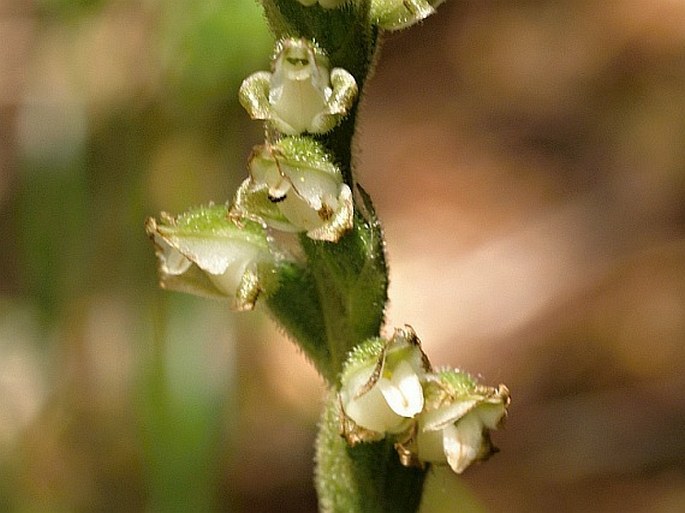
Distribution: North American species with disjointed areas of distribution. Although it is found in Alaska, it is missing in Canadian arctic and although it is occurring across most of the west and northeast, it is absent from Canadian Manitoba southward to Texas and from Lake Michigan southward and although it is found in the western part of the continent reaching northern Mexico, it is absent in Nevada.
Ecology: Wet and dry coniferous or mixed forests, in Rocky Mountains in high elevation spruce forests, 0–3400 m. Blooms in July and August.
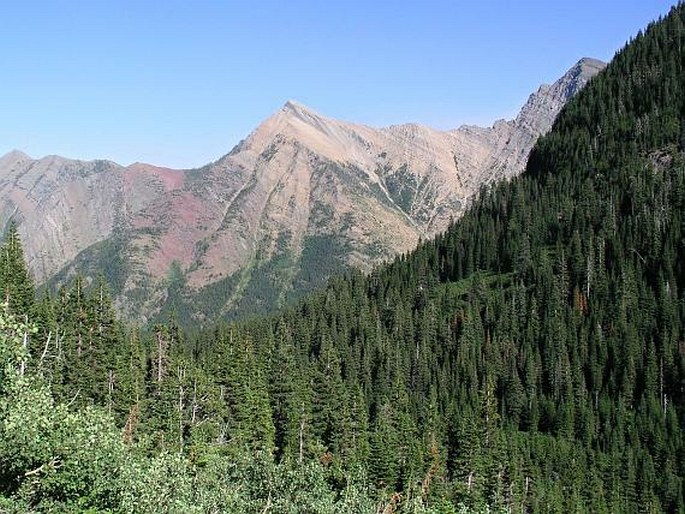
Description: Perennial herb, flowering 10–45 cm tall, erect or ascending, from fleshy roots. Basal leaves in a rosette, close to the ground, narrowly elliptic to ovate, 2.5–10 × 1–3.5 cm, apex acute, usually streaked with white along the midrib, fine lateral veins, white. Inflorescence erect to ascending, peduncle to 35 cm long, 10–48-flowered spike, spiral or unilateral; flowers 8–10 mm long, greenish white, upper sepal fused with lateral petals forming a hood; lip deeply concave, boat-shaped, 6–7 mm long, margins slightly curled, inner surface covered with 4 rows of glandular papillae; pollinia pointed, stigma beaked. Fruit is a capsule, erect, 1 cm long.
Threat and protection: Although this species is endangered only in the state of Maine, CITES agreement provides protection in trade of all orchids.
Note: The genus is named in memory of British botanist John Goodyer (1592–1664). Four species are recognized in North America. Besides this species, circumpolar Goodyera repens and in the east striking G. pubescens and G. tesselata, which is intermediate between G. repens and G. oblongifolia or possibly their hybrid. The variety G. o. var. reticulata was described for reticulation of lateral veins of the leaves, however, this feature varies within any clone, it is now considered a form only.
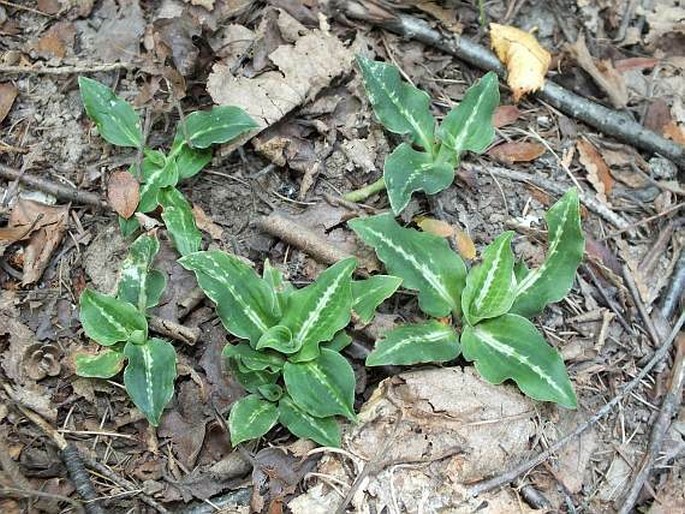

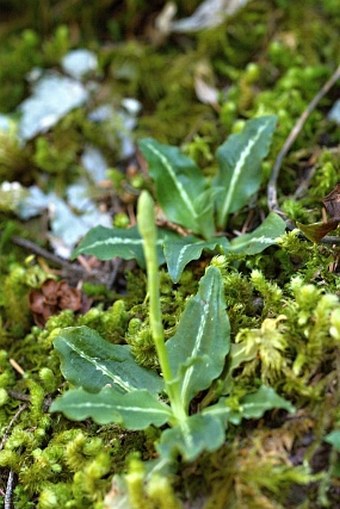
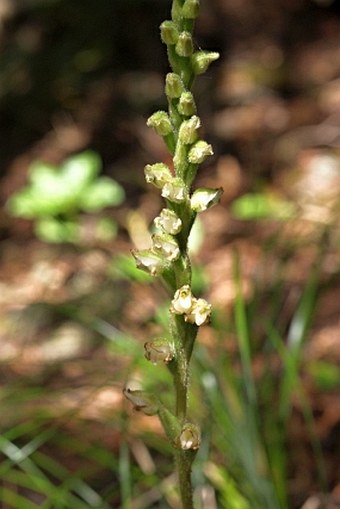

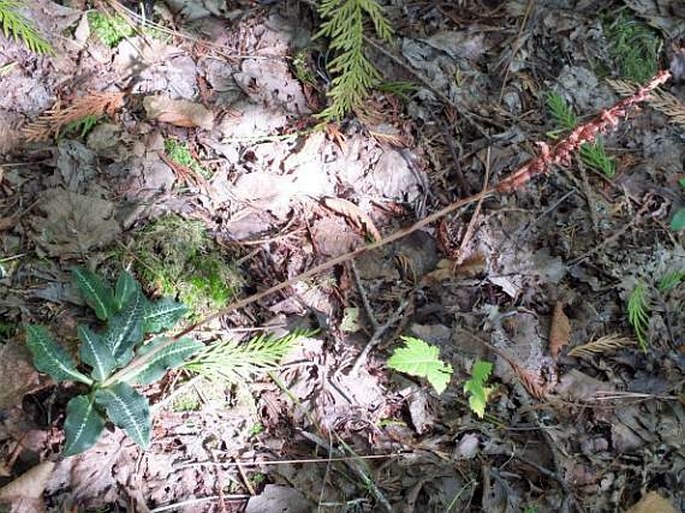
These images were taken in Canada, British Columbia, Strathcona Provincial Park, Phillips Ridge Trail; Alberta, Waterton Lakes NP, Rowe Creek (by Alena Vydrová and Vít Grulich: July 11 and 29, 2007), and Canada, British Columbia, Burton (by Karel Bergmann: September 2013).


